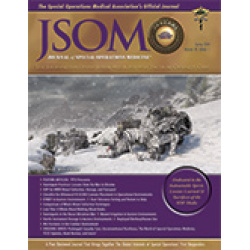Heat Tolerance Testing and the Return to Duty Decision: A Two-Year Case Cohort Analysis
Kester R, Abraham PA, Leggit JC, Harp JB, Kazman JB, Deuster PA, O'Connor FG 24(1). 48 (Journal Article)
Background: Among individuals with prior exertional heat illness (EHI), heat tolerance testing (HTT) may inform risk and return to duty/activity. However, little is known about HTT's predictive validity, particularly for EHI recurrence. Our project sought to demonstrate the predictive validity of HTT in EHI recurrence and HTT's utility as a diagnostic tool in exertional heat stroke (EHS). Methods: Participants with prior EHS were recruited for the study by a physician's referral and were classified as heat tolerant or intolerant after completing demographics and an HTT. Participants were further categorized as single/simple (SS) EHI or recurrent/complex (RC) EHI by conducting a retrospective record review of the following two years. We calculated the positive (PPV) and negative predictive values (NPV) of HTT. Results: The retrospective review of HTT records was used to categorize 44% of Servicemembers as RC, with 77% classified as heat tolerant, 14% as heat intolerant, and 9% as borderline. When borderline cases were classified as heat intolerant, HTT had a high NPV, indicating a high probability that heat-tolerant individuals did not have recurrent EHI. When borderline cases were classified as heat tolerant, NPV and sensitivity decreased while specificity increased. Conclusion: We demonstrated that the HTT had a 100% NPV for future EHI over two years of follow-up for Servicemembers with a history of recurrent heat injury and negative HTT results. An HTT can provide critical data points to inform return to duty decisions and timelines by predicting the risk of EHI recurrence.


 Español
Español 



